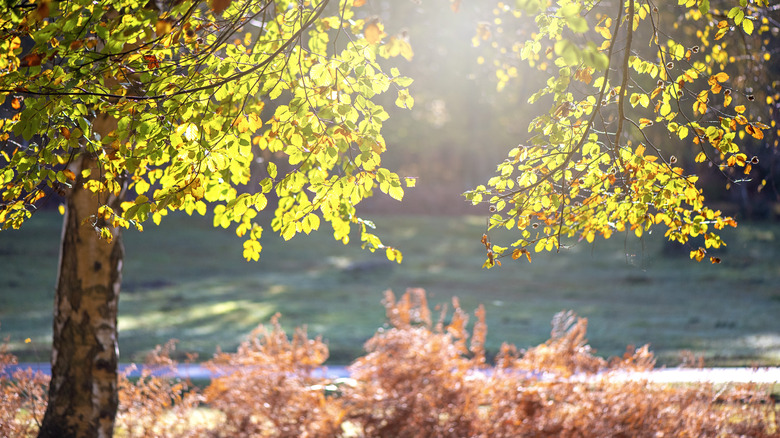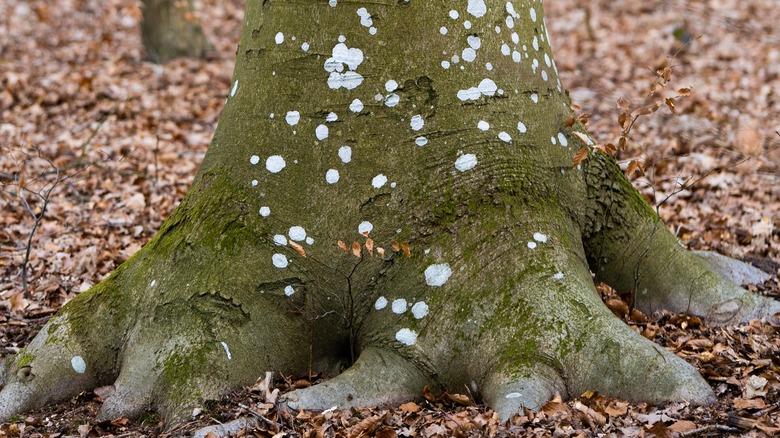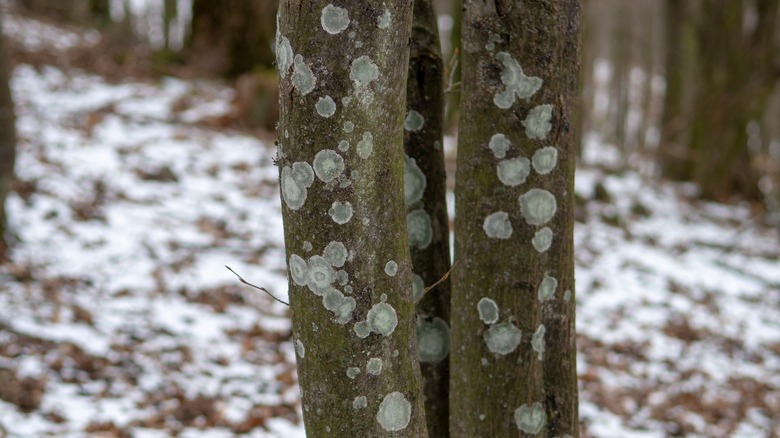Save Your Beech Trees By Learning How To Spot And Manage Scale Disease
We may receive a commission on purchases made from links.
Known for being one of the few trees with white bark, the Beech tree (Fagus sylvatica) has a broad canopy and a variety of functional uses. However, these incredible trees are threatened by beech scale disease, also called beech bark disease (BBD) — a condition that can lead to significant damage or even kill the infected trees. By learning to identify the signs of scale disease, understanding its causes, and knowing how to manage it, you can help protect your beech trees from this serious threat.
The first sign of scale disease is a layer of white waxy fuzz appearing on the bark. While this layer might resemble fungus, what you're seeing is the accumulation of the scale insects (Cryptococcus fagisuga). BBD begins with an infestation by these tiny insects, which feed on the tree's sap by piercing the bark, weakening the tree and creating openings for fungal infections. Left unchecked, the infestation will lead to symptoms associated with a fungal infection from two species of the Neonectria fungus, N. faginata and N. ditissima. The fungi's red, fruiting bodies usually appear on the trees' bark in the fall. As the disease progresses, the trees will develop large cankers, which might produce a brownish liquid.
Early intervention can prevent these problems from spreading and keep your trees healthier for longer. If you spot signs of scale disease, it's important to act quickly by pruning infected branches and using targeted insecticides and fungicides, which might help manage the spread and protect your trees.
How to identify beech scale disease
When you're checking for beech scale disease, there are a few key signs to look for. If you notice that white, powdery buildup on your beech trees' bark, what you're seeing are beech scale insects gathering in clusters. Over time, as the insects continue to feed, you'll notice that the bark begins to crack and blister. The damaged areas will likely become more pronounced or look uneven, with some parts of the bark looks raised or pitted.
Beech scale disease is a two-part problem. The scale insect infestation creates conditions that allow fungal infection to develop, and these are the symptoms you'll observe as the disease advances. The fungal infection will first appear as lesions on the bark. As the fungus continues to develop, it will start producing small, red, fruiting bodies, which appear as red spots and release spores that help the fungi spread. With time, your beech tree's bark will become covered in cankers. The tree may also show signs of overall decline, such as yellowing leaves, stunted growth, and dead branches. These advanced signs of BBD typically develop after the tree has been impacted by the fungal infection.
Managing and treating beech scale disease
Unlike getting rid of scale on plants, treating your trees requires more proactive steps and consistent monitoring. Once you identify signs of the scale insect, applying horticultural oil spray, such as Bonide All Seasons Horticultural & Dormant Spray Oil, in late winter or early spring can be an effective way to control the insects. These oils suffocate the scale insects before they become active, helping reduce their numbers early in the season. Make sure to follow product instructions closely, as applying these sprays during hot weather can harm the tree.
Encouraging beneficial ladybugs to visit your garden is also helpful. Ladybugs are natural enemies of scale insects and can help reduce their population. Planting a diverse array of flowering plants nearby can attract beneficial insects, creating a natural balance and reducing the need for chemical treatments. If the fungal infection has already started, a fungicide treatment may be required. Since managing fungal infections in trees is complicated, it's often best to consult a professional arborist, especially if the infection appears severe.
In some cases, a heavily infected tree may need to be removed to protect nearby healthy trees. While this isn't ideal, removing a single diseased tree can sometimes save others in the area from infection. Regular maintenance practices such as pruning, mulching, and watering can also improve your trees' overall health, making them more resilient to infections. Healthy trees are generally better able to resist disease and recover from stress, so providing your beech trees with optimal conditions can help them withstand threats like beech scale disease.


